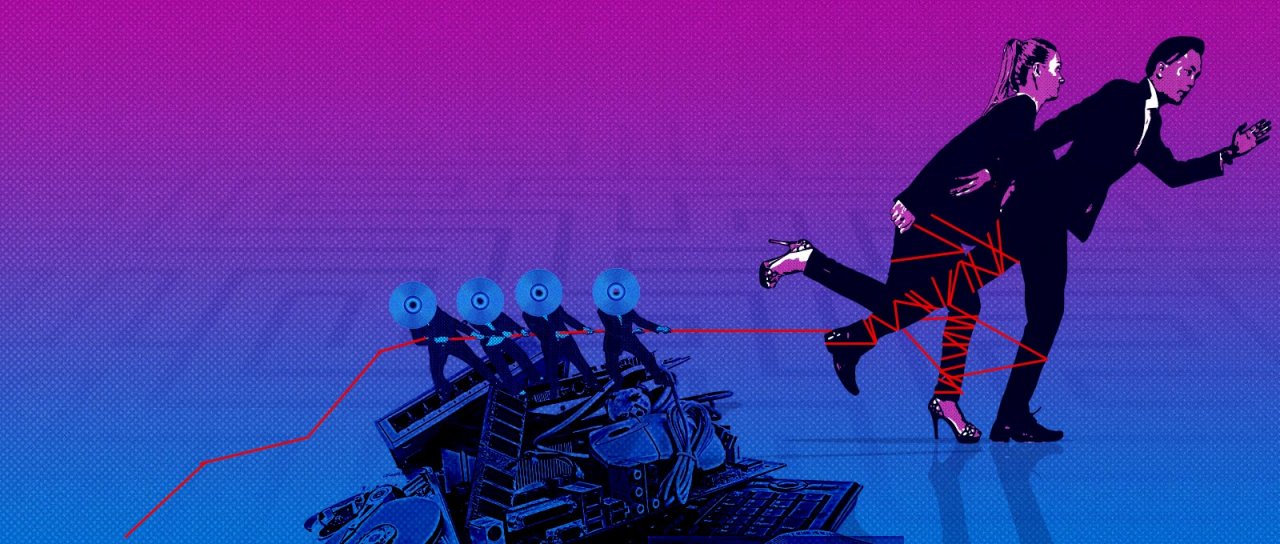Why Legacy Applications are Holding You Back
Three steps to cost savings through application modernization.
Applications are the technological lifeblood of any company. From productivity and resource management to security and commerce, perhaps no other component of your business is as tied to your success or failure as application modernization. Are your applications helping or holding you back?
The business integration of artificial intelligence, blockchain, Internet of Things, robotics and 3D manufacturing is rapidly changing the way companies work — and the applications that support them. But some companies assume that evolving with the times is too expensive. As history has proven, though, it's often more expensive to continue with the status quo.
A study by Dell Technologies shows that up to 80% of a company’s IT budget is used to keep aging infrastructure running. In an environment where IT leaders are increasingly encouraged to reduce spend, having legacy applications that eat up your budget can make it very hard for an IT team to innovate and adapt to the new technologies that can make a business stand out. In the long run, without modernization, you’re likely to spend more on overhead expenses for technology that doesn’t help you move the needle on your largest initiatives.
Shawn McCarthy, Research Director at IDC says, “Moving an older system isn’t just about the cost of the hardware and software. It will be expensive, but when you look at what the legacy system is costing you two, three or four years down the road, we have seen most [application modernization programs] pay themselves off in a two-to-three year period.”
When an organization gains insight into the long-term legacy costs of maintaining the status quo, they quickly see the importance of dedicating budget to application modernization efforts.
So how do you get started, and when does modernizing your legacy applications make the most sense?
Step 1: Assess your maturity
The first step in application modernization is to assess maturity. Has IT previously completed an application modernization program? If yes, has it been maintained properly over time? If your organization has never undergone a legacy system migration and is at an early stage of maturity, you should likely focus on the low-hanging fruit.
This “low-hanging fruit” typically refers to three different application types:
1. Duplicate applications (e.g., multiple instances of the same application)
2. Overlapping applications (different applications that handle the same business functions)
3. Non-essential applications
For duplicate and overlapping applications, the modernization process is fairly straightforward. IT teams will need to meet with business units and propose a solution — usually the consolidation of instances or removal of duplicates. IT must be authoritative here. Most business units will resist change, stating that they cannot function without the legacy application or that the other application choices are insufficient. IT needs to act as an advisor and as a decision maker during the modernization process, because it’s ultimately the IT budget that will provision these applications. Teams will need to work with the applications provided.
Identifying non-essential applications can be more difficult. Some business units may believe that the applications they use are essential, but they don’t have the oversight required to make reliable decisions about company-wide IT solutions. The best way to identify if an application is essential is to ask a series of questions:
- What happens when this application goes down?
- What essential business functions does it support?
- What happens if this application is unavailable for an hour, a day, a week?
The answers to these questions can help IT teams identify essential applications, prioritize them and develop modernization timelines that work for each team.
Step 2: Build a plan
After identifying which applications will be involved in the modernization process, you next need to build an plan. Specific plans will vary between organizations, but there are some general guidelines you can follow.
Timelines should be considered early in the planning process. How much time will it take to stand up new applications and migrate people, processes and data? Who are the teams and people impacted by this process?
Some of the biggest application migration questions will likely center around data — especially when deciding whether data should be migrated, deleted or archived. Some of the questions IT teams will need to answer include:
- What are the regulatory requirements around this data?
- Does it need to be stored for a certain period of time?
- What are the company policies around this data?
- What is the data used for?
- Who needs access to it?
Even if you identify that the data can be archived, there are other things you must consider, like whether the data will be needed for benchmarking or reporting, or how often people may need to access it.
Data security should always be top of mind. Assume your data is going to be hacked and ask: How would hackers gain access to our data? If they did gain access, what would they be getting? Security and compliance teams should be involved at this stage of the application modernization process as well.
Step 3: Plan ongoing modernization
Application modernization should be an ongoing endeavor — think of it as a digital evolution process. IT will need to regularly check in on applications and consider:
- Is the right version being used?
- Does the business have the right level of support?
- Are the applications supporting teams in the ways they need most?
- Are there any gaps or holes?
- Do we see any opportunities for automation or streamlining?
At this point in your application modernization, you’ve completed the heavy lifting and your IT budget may be looking quite a bit lighter. This should open teams up to focus more time on innovation and leveraging new technologies. IT can truly position itself as a partner and driver in business innovation. This is where the new CIO is born.

The Application Modernization Playbook: A Guide for IT Directors
About the Authors

VP of Application Services
Vineet Sawant
Vineet is a seasoned business leader with a career spanning IT strategy, product management, sales & solutioning, and delivery of consulting & outsourced IT services. Vineet has led Applications & Professional Services delivery organizations including leading major transformations at high tech, media & communications enterprises in the adoption of next generation services and cloud platforms, digital transformations, data center migrations, ERP, CRM and data modernization, and technology innovation. As the VP for Application Services, Vineet and his team are creating differentiated offerings through managed application services platforms to assist Rackspace customers in their modernization journey. He also leads the Americas Professional Services delivery organization where his team continues to expand Rackspace’s mission of providing our customers with unbiased, practical advice and execution to accelerate the adoption of modern IT platforms and applications.
Read more about Vineet SawantRelated Topics
